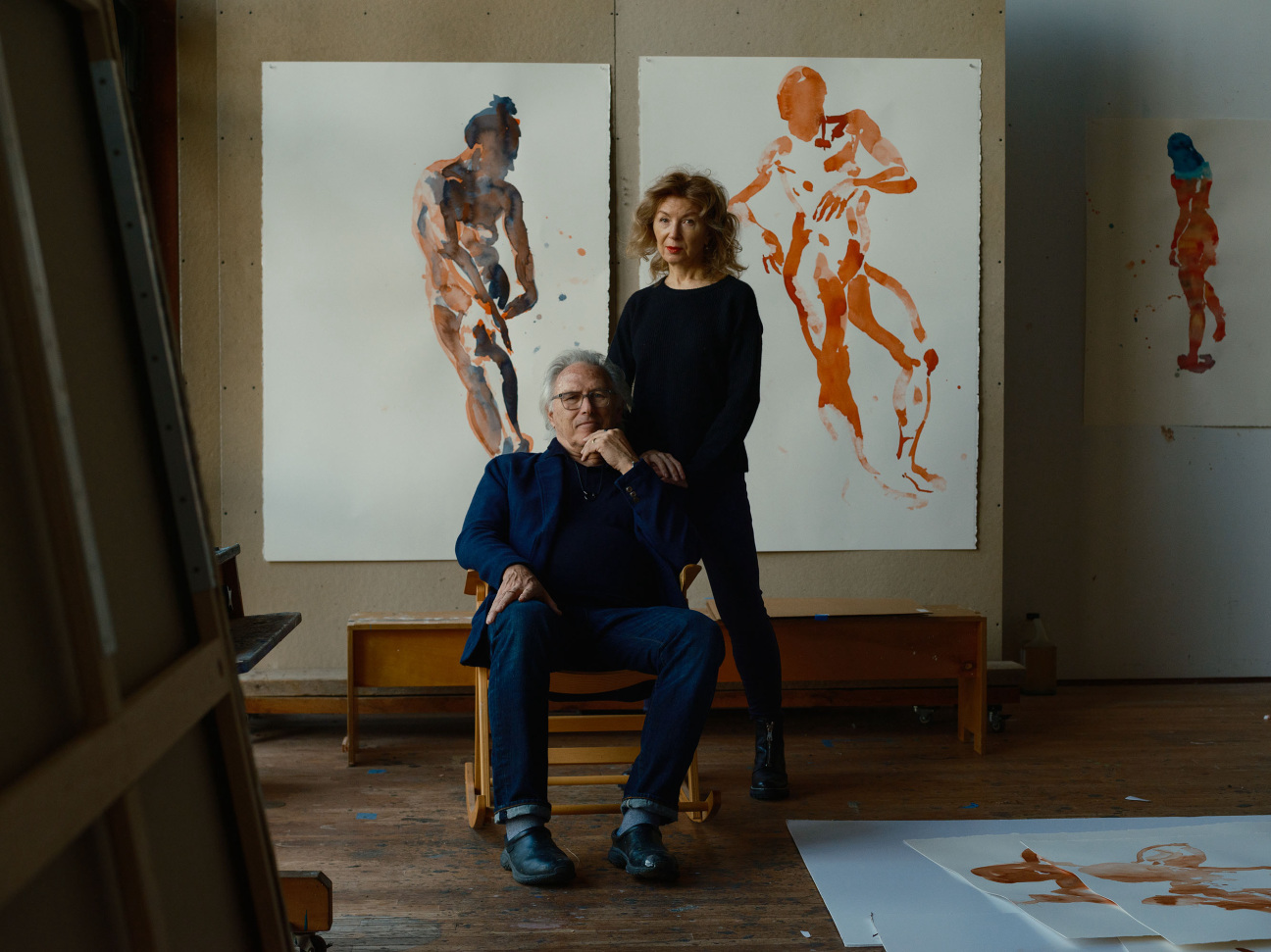
April Gornik and Eric Fischl
While studying at the Nova Scotia College of Art and Design, April Gornik met Eric Fischl, who at the time had just begun teaching. The two painters immediately hit it off. Decades later, the married artists continue their work—hers, dreamlike landscapes infused with beauty and emotion, and his, a neo-expressionist take on Americana—in Sag Harbor, New York, where they’ve co-founded a community arts center in a former Methodist church from the 1800s.
CULTURED: What is your partner’s work really about?
April Gornik: Eric’s work is about vulnerability, stages of life, tension in interactions, poignancy, emotion, desire, courage, fear, and intimations of mortality.
Eric Fischl: April’s art is primarily about place: the intricacies, complexities, beauty, power, and weather. Place, for her, is the emotional and psychological language of nature.
CULTURED: The best part about having an artist for a partner is?
Gornik: They understand if you’re too involved with painting to stop for dinner! But seriously, it’s being able to communicate with, through, and about art, and recognizing its critical importance to life itself.
Fischl: Not questioning each other's need and necessity for shutting out the outside world while working in the studio. Me-time big time.
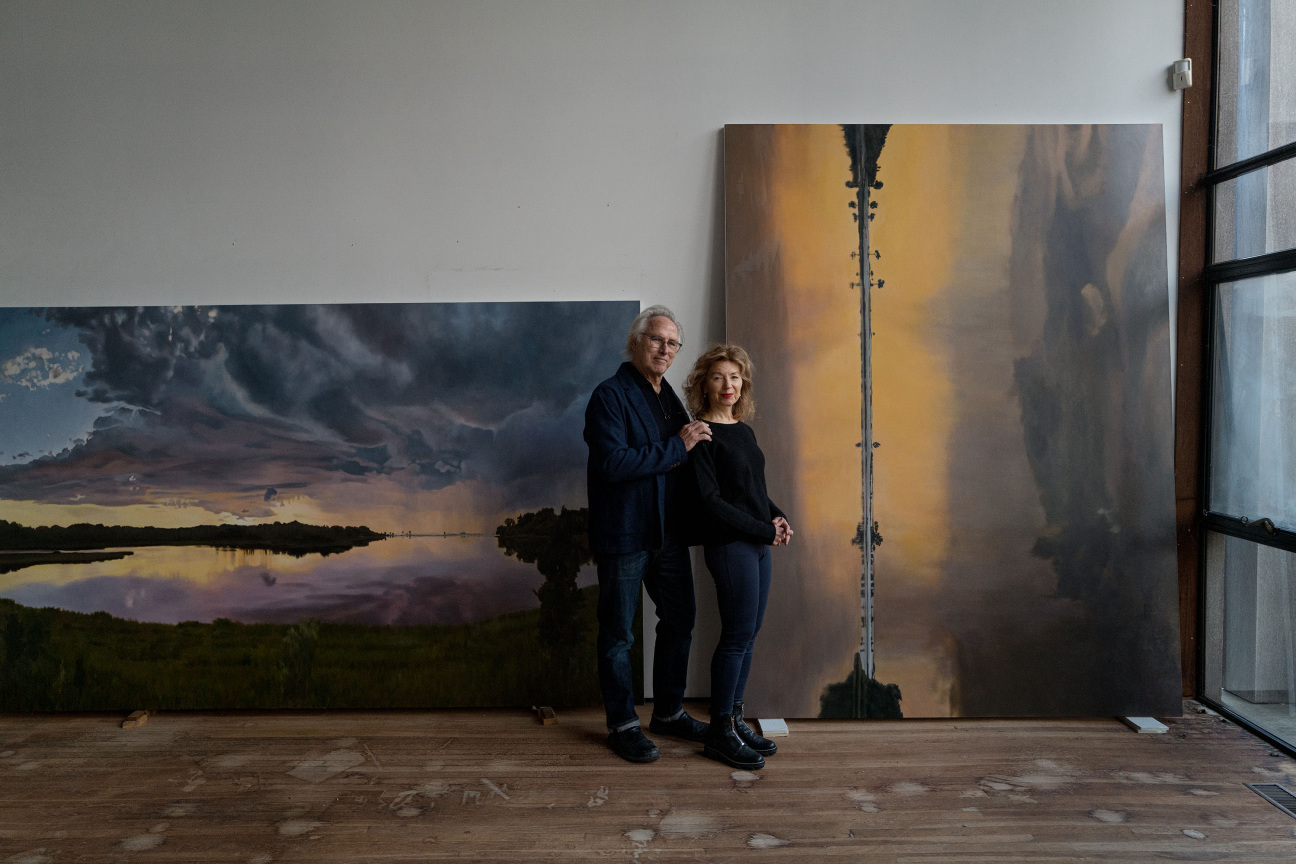
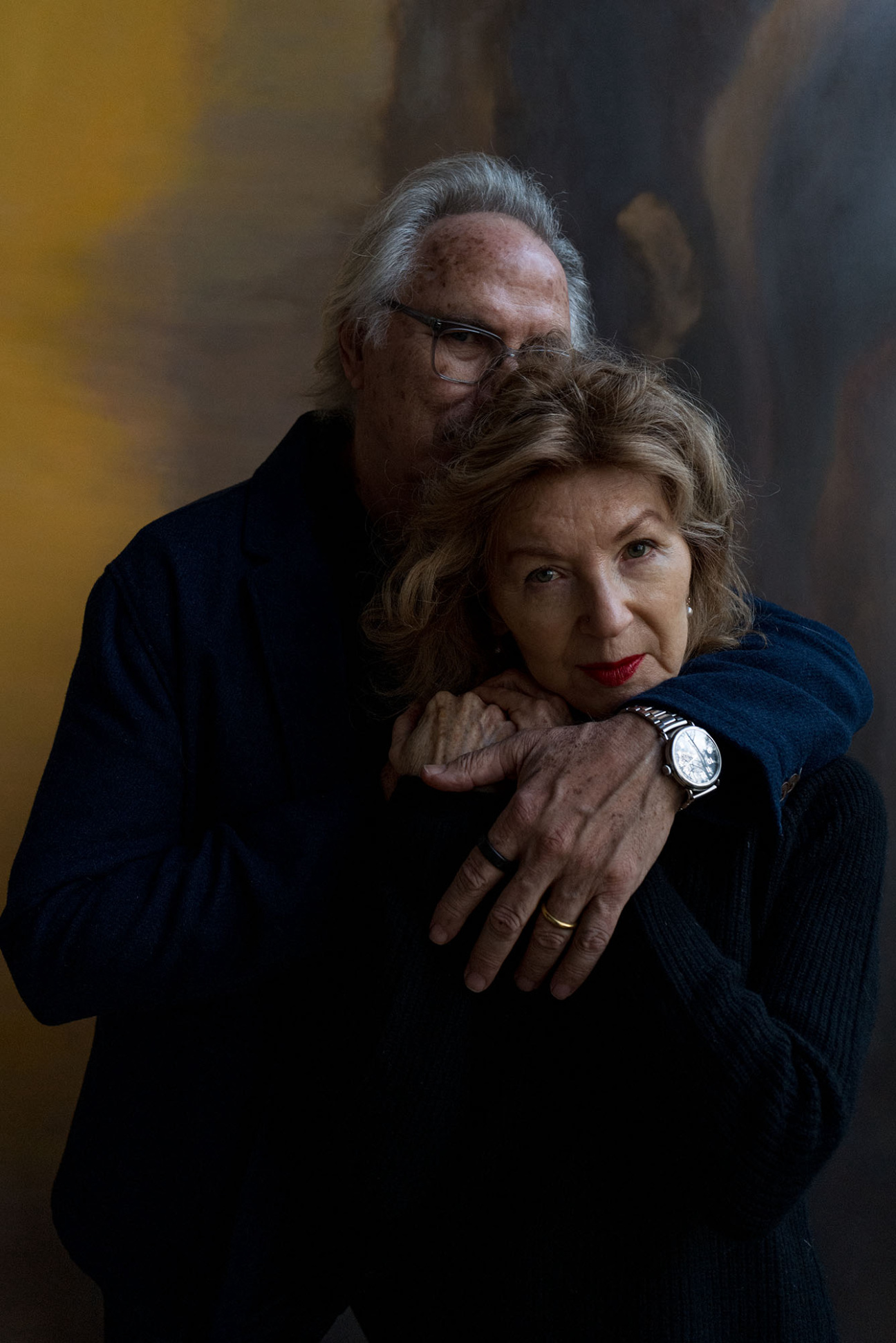
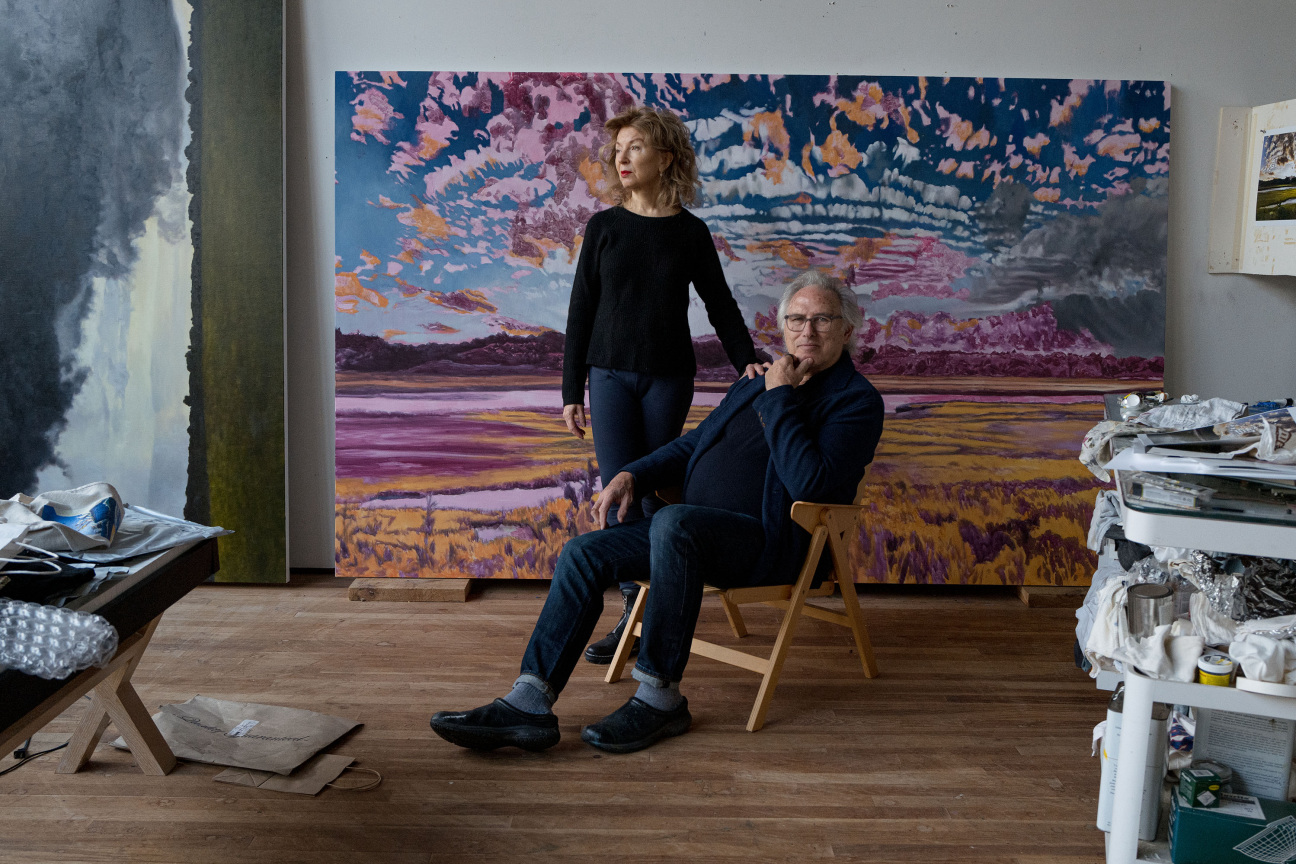
CULTURED: The challenging part about having an artist for a partner is?
Gornik: Jealousy, competition, and being really hungry for dinner but patiently trying to wait.
Fischl: Not understanding why they’d rather be alone in their studio struggling to make sense and meaning out of the chaos of life over sitting together in the kitchen talking trivial bullshit, or not talking not all but just doing Wordle.
CULTURED: How has your partner affected your own practice?
Gornik: When I saw Eric tentatively making representational art when we first met, it felt like a brave allowance to explore it, although I didn’t for some time. He used figures on a flat ground, and I wanted to depict space and light when I first started making landscapes, so we got off on slightly different footings. I was excited about the emotional impact of his representational work, after living in the emotionally uninflected art I’d been trying to make as a student. Early on, we were watching and seeing each other making work in realms that had been taboo for artists in the recent past, so I think we probably gave each other courage. And we certainly gave each other support. That’s a priceless gift.
Fischl: April is the first person I show, what I hope, is my finished painting. She knows my work intimately, and knows what I am capable of. She knows if I’m hitting my marks or phoning it in. I don’t seek her approval. I seek her eye.

Naima Green and Sable Elyse Smith
Naima Green can't stop photographing her partner Sable Elyse Smith. The Harlem-based visual artists—Green, a photographer, and Smith, an interdisciplinary artist whose work spans video to text—eloped this past year, and while they have not formally presented an artistic collaboration—at least yet—the two are irrevocably tethered to one another.
CULTURED: What is your partner’s work really about?
Naima Green: Sable’s work is about money, power, and respect.
Sable Elyse Smith: Me! I’m talking shit. She’s always taking photos of me; it’s become a running joke between the two of us. (That’s what happens when you live with a photographer!) But, yes, her work is definitely about love and intimacy—the love she has for wanting to make people feel seen, and then her immense dedication to getting that right, whatever right is in that moment.
CULTURED: How has your partner affected your own practice?
Green: I first met Sable because I saw a piece of hers [Centinela] at MoCADA in 2015. Prior to meeting her, I’d never thought so much about the prison industrial complex, how it’s impacted my own family, and people around me.
Smith: I don’t know that I’m able to pinpoint one thing or a list of specific things, but we talk about our work with each other often, and I feel like I’m always learning something or seeing things in my work in new ways through those convos. So who knows what that impact will look like 10 years from now.

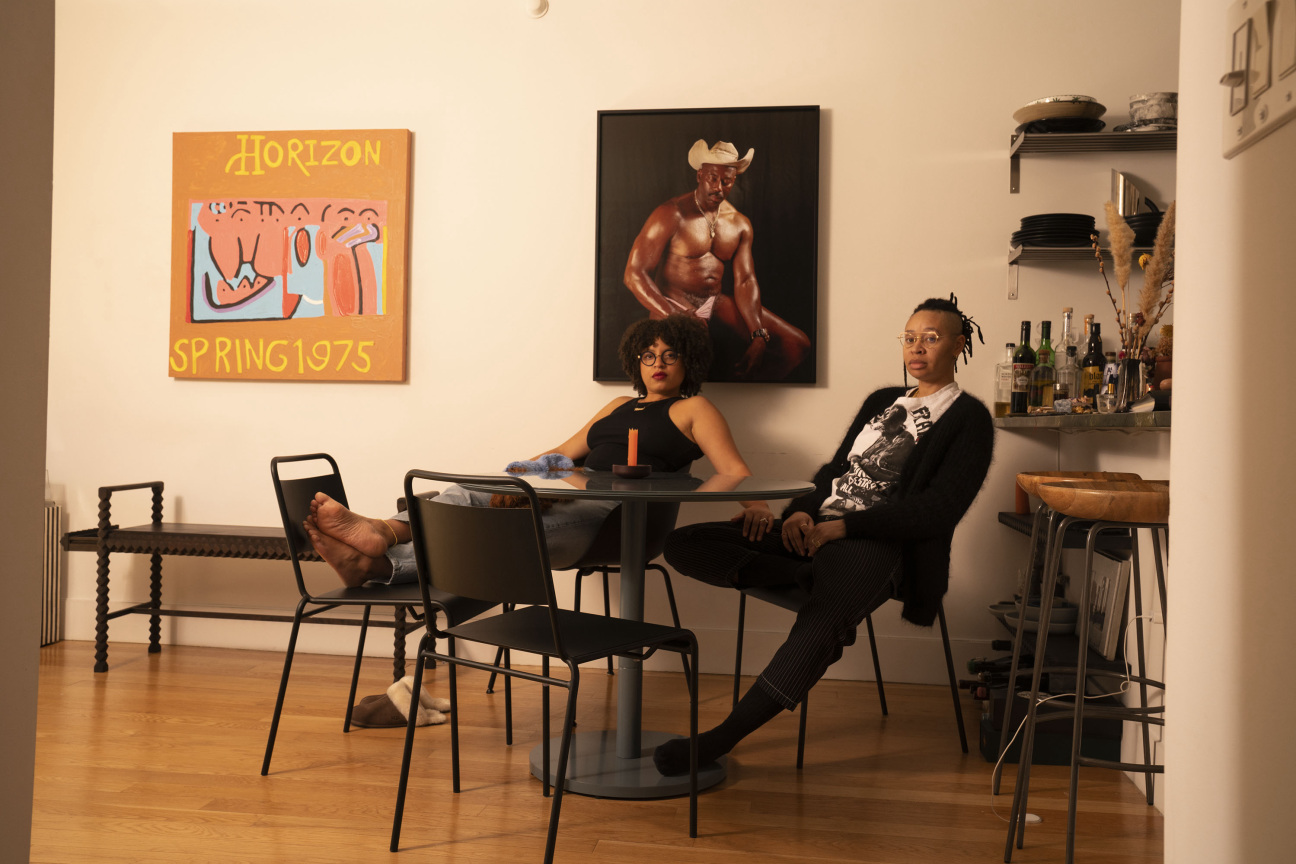
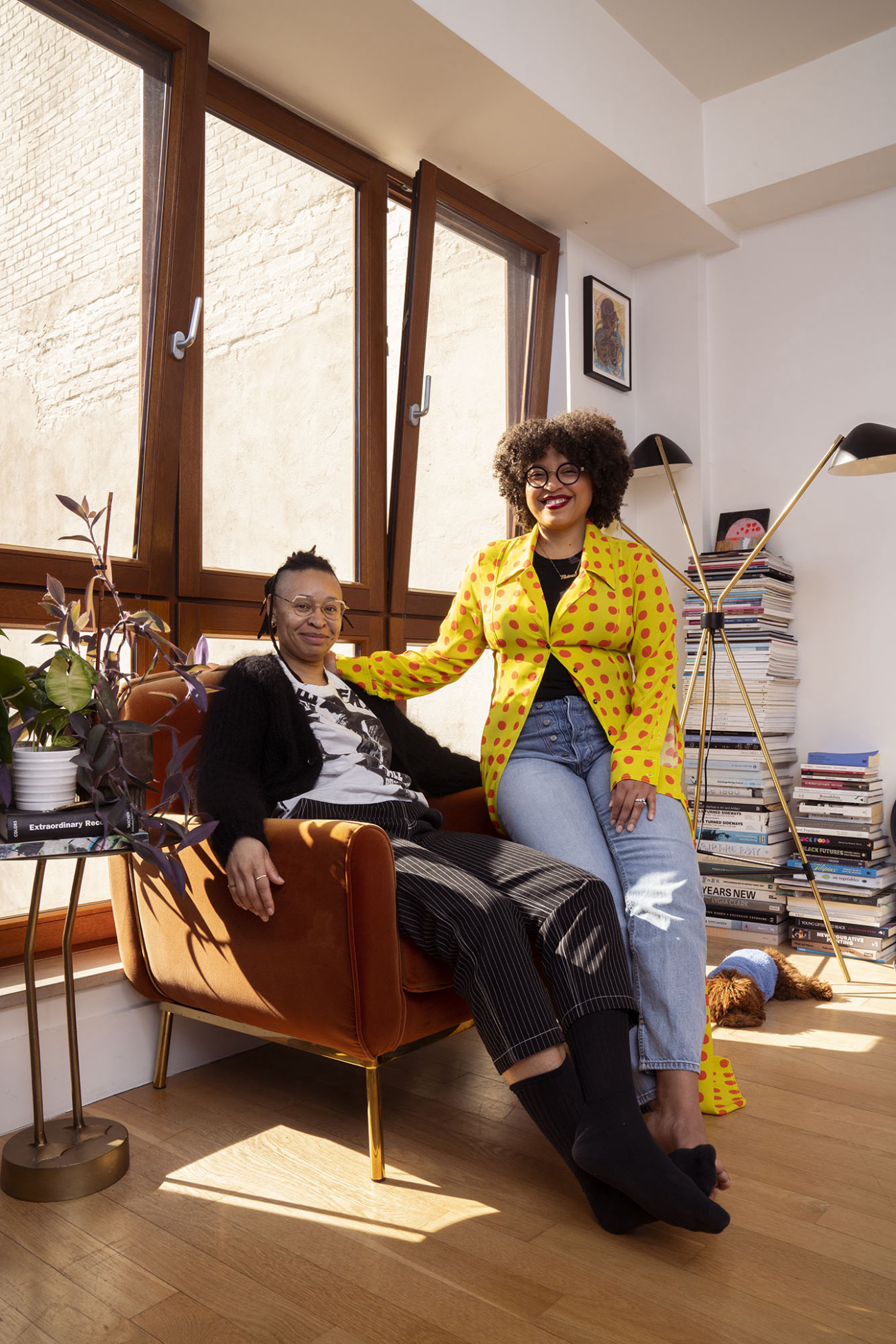
CULTURED: How do you separate your personal and artistic collaborations?
Green: We don’t explicitly collaborate artistically, so it’s very easy to know when that is happening. I might help Sable brainstorm for a show, or I’ll ask her to talk through a sequence with me, but it’s much less than our day-to-day collaboration.
Smith: Naima doesn’t separate; that’s how we met! She takes my picture all the time, in the house, outside, on vacation, in the hotel at my studio. Sometimes Naima will stop me and say, “Close the curtain like that again.” I just laugh.
CULTURED: What is your favorite work by your partner and why?
Green: Because she’s a poet, some of my favorite works by Sable are her text pieces and her neons.
Smith: This is so hard. Naima’s archive is huge, and there are so many pictures I love. Maybe recently, a physical installation at ICA VCU that she made called Skin Contact. I love how it filled up and framed the space of the exhibition. It was a language weaving together all of these disparate moments of intimacy. Otherwise, it’s nearly impossible to pick one image.
CULTURED: Who’s the source of order? Who’s the source of chaos?
Green: Sable is the source of order, I am absolutely the source of (mostly fun) chaos. Last week she said, “You’re going to come do your terror and leave.” That’s what happens when she falls asleep before me.
Smith: Naima’s ass is the chaos!
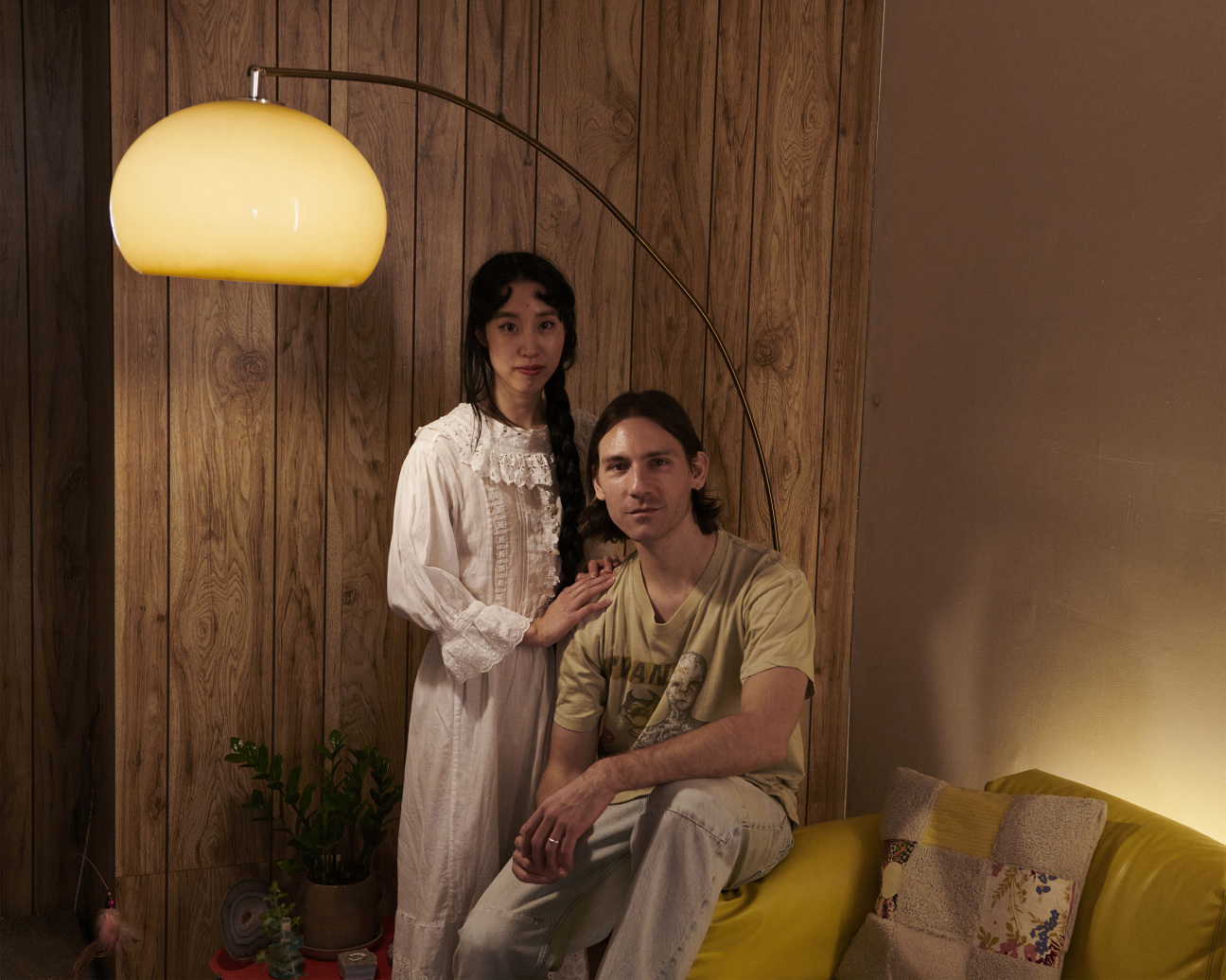
David Brandon Geeting and Lina Sun Park
In the book A Spell Too Far, photographer David Brandon Geeting and multidisciplinary artist Lina Sun Park reveal two years of surrealist scenes realized through ready-at-hand household props and imagined during the pandemic in their Greenpoint, Brooklyn apartment. While the husband and wife creatives don't often work in tandem, the project found harmony between each's converse personality.
CULTURED: What is your partner’s work really about?
David Brandon Geeting: Lina’s work is like the perfect conversation between her imaginative childhood mind and her nuanced, well-measured adult brain. I look at her images, her sculptures, her pies, and even the handbags she makes, and I think, This is what it would be like if an adult took detailed instructions from a 5-year-old to make whatever they wanted come to life. The catch is that the 5-year-old is interested in Victorian-era gowns as much as they are in apples shaped like butterflies.
Lina Sun Park: Dave's work is about fantastical thinking; it's sharing his inner world of rich narratives he places onto familiar things, creating a moment for them to meet, and photographing it. I'm happy we get to see a little bit of what goes on in his mile-a-minute mind. A lot of it is also about the act of giving things the space to see what will transpire, as well as acknowledging, but not adhering, to standard rules of photography—or any rules for that matter.
CULTURED: The challenging part about having an artist for a partner is?
Geeting: You both have totally different ideas about what works for you, about what your individual audiences might appreciate, about tactics that could propel you forward, and about which direction your work should head in. We constantly give each other advice that feels tough to hear. It’s not a bad thing—in fact, it’s very welcomed!—but it is challenging.
Park: We both have such a strong sense of visual aesthetics that it can take some time to find things we both resonate with to furnish our shared spaces. Sometimes this pours over into the visual presentation of our food, too.
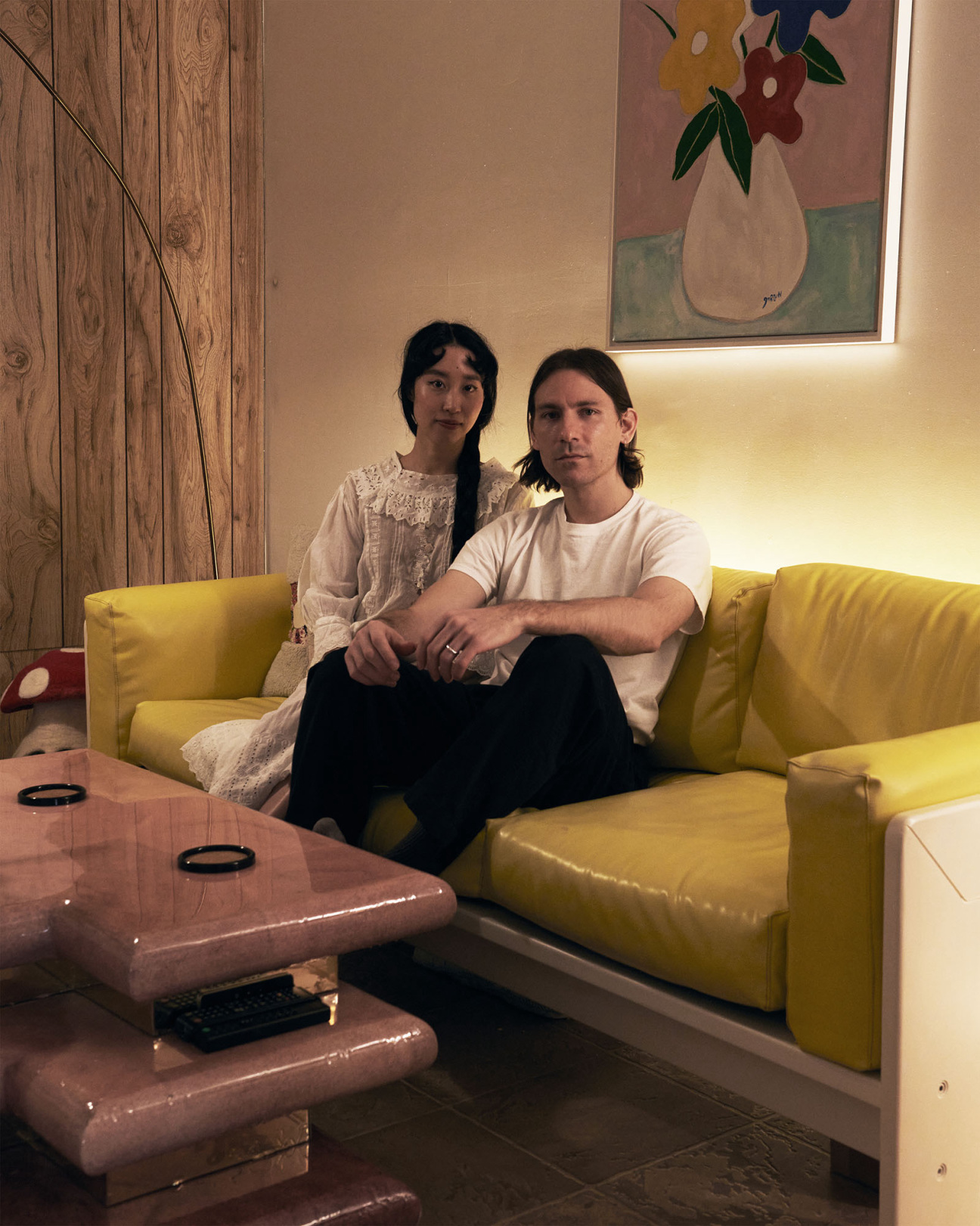
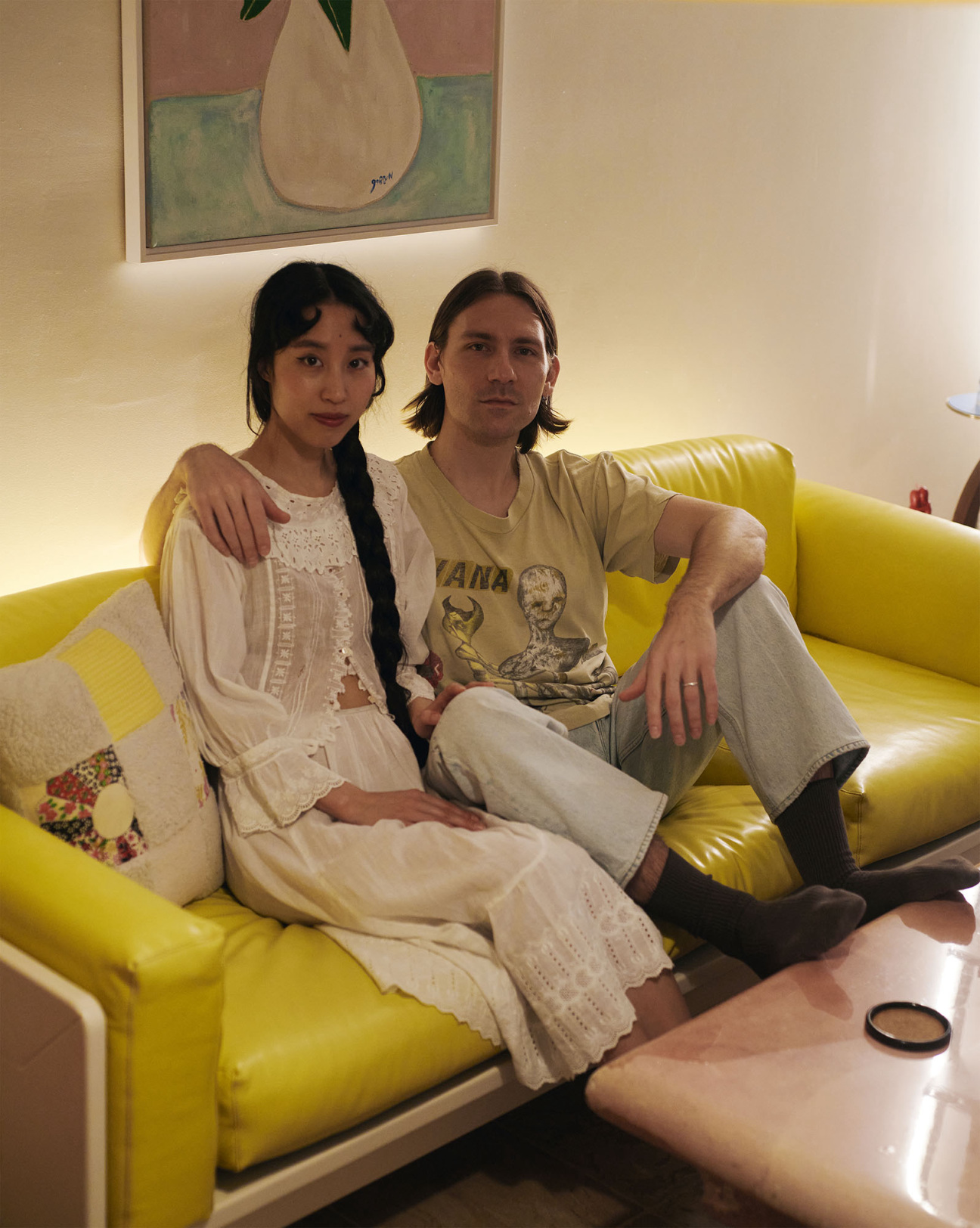
CULTURED: What do you bond over and disagree about?
Geeting: We both appreciate things that are sort of classically beautiful: Renaissance paintings, Dutch still lifes, ancient Greek sculptures, etc. This applies to nature as well; we are both enamored with wild sunsets, skies full of stars, and serene streams of water. I think where our differences lie is in presentation: Lina prefers to display her work with an air of effortlessness, shot with an iPhone flash, and without proper titling. She makes it look as though "anybody could do it." (They can't.) I tend to perhaps take my presentation too seriously, naming and dating each and every high-def studio still life I create, making even simple moments look extreme and over-produced. I think we're both trying to shroud the actual content of our work in different aesthetic treatments in an attempt to find some sort of balance.
Park: Dave and I both bond over the great photography of vintage books, Surrealist paintings, minimalist sculpture, as well as the grand experience of walking through the Louvre. We disagree about certain works that require copious amounts of text in order to be understood. I love a good wormhole read. Depending on the piece, I love reading the history, intention, etc. behind it. Dave prefers art that is profound enough to stand on its presence alone.
CULTURED: How do you separate your personal and artistic collaborations?
Geeting: A daily personal collaboration for us would be cooking a meal together (or cooking a meal solo but making it really special to try and impress the other). We also collaborate on how we want each room in our living space to look, and are constantly checking in with each other to make sure we’re still vibing with it all. Artistic collaborations between us only happen a few times a year. They take a lot of energy and scheduling to bring to fruition, but are always so worth it.
Park: Our artistic collaborations feel more finite in the sense that once we finish a piece, it speaks that one note forever. Our personal collaborations feel a bit lighter, and have room to be added onto and evolve in real time. There is no end to them. I would consider anything, from Dave and I arranging a bouquet of flowers on the kitchen table together, to decorating our house, a personal collaboration.
CULTURED: Who’s the source of order? Who’s the source of chaos?
Geeting: We are both sources of order and chaos, but in totally different ways. From the moment I wake up, I’m fumbling around the house, speaking in sing-songy rhymes, making insane faces, and making myself laugh in the process. Lina is very calm, and always has a serene presence, which creates an excellent balance. Conversely, I keep my desk very clean, my closet “looks like a store” (Lina’s words), and if we have early travel plans the next morning, I try to be responsible by packing and going to bed at a reasonable hour the night before. Lina is more of a free spirit in this way, leaving her desk decorated with every little thing she’s working on at the moment, using her closet as a means in which to try eight outfits on quickly and throw the ones that don’t work back in a pile, and pulling an all-nighter to shower and pack before we have to fly anywhere. It’s all part of the ebb and flow of our lives together. We accept each other and work with our differences to keep things growing and progressing.
Park: These roles interchange between us. I feel I have a lot of inner chaos yet outer order, and Dave has a lot of outer chaos yet inner order. Somehow it always balances out between us.
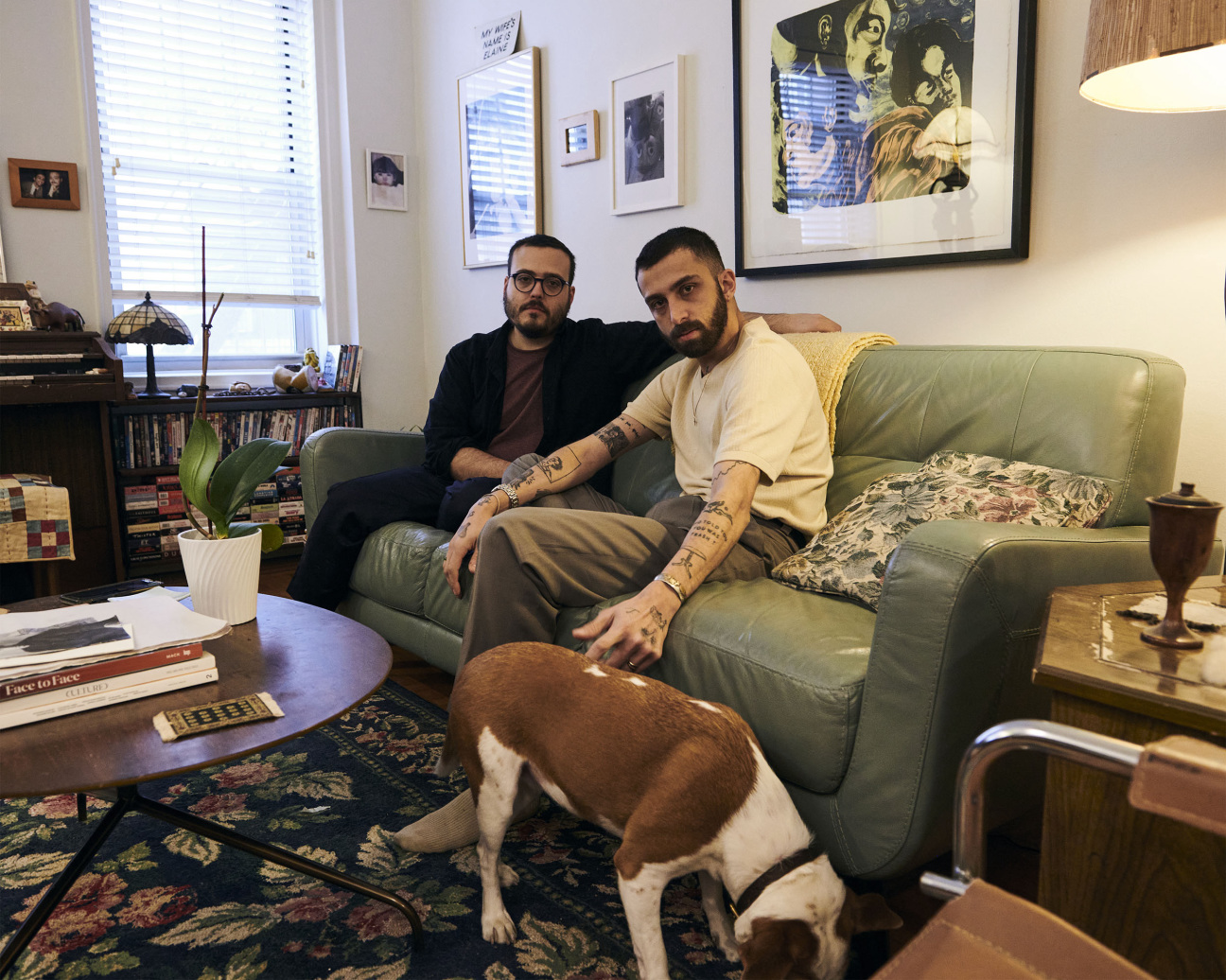
Ian Lewandowski and Anthony Cudahy
Ian Lewandowski and Anthony Cudahy once shared a studio for work, but their practices—the former photography, and the latter, a CULTURED Young Artist alum, painting—now typically only intersect in discussions of concept which, for the Brooklyn husbands, come in an endless number.
CULTURED: What is your partner’s work really about?
Ian Lewandowski: The cacophony of images of the human body that pervade our sight daily. Anthony is interested in how a figure can be the catalyst—the container for a singular story—but also the connective tissue to a larger network of stories. He pays keen attention to those around him—how they move through the world and their role in a particular social strata—but also how their image might be reminiscent of that of a Bruegel farmer, or how it might be read 100 years from now in cloud storage.
Anthony Cudahy: This is a specifically difficult question, as Ian and I spend a lot of time trying to pin down what about our practices is beyond words, and thereby what the work may actually be “about.” So I can point—but not definitively say—to photography and its history, the precariousness of lineage, gesture, and pose and their transmutation from person to person across time and artifice. The reason for this work is the hyper-present state Ian finds himself in when he and the camera are one entity; he focuses the camera and moves around knobs and adjusts the lighting without conscious thought. And then there’s the other odd sympathy forms between him and the model(s)—a crazy high you spend the rest of your life hoping to step back into.
CULTURED: The best part about having an artist for a partner is?
Lewandowski: You are inevitably with someone with the same irrational, borderline unhealthy obsession with something that you have.
Cudahy: I don’t have to worry about explaining why I need to stay at the studio into the early hours of the morning. A terrible studio mood, or the occasional inverse emotional peaks, are understood. We both end up being each other’s de facto assistant, which likely allows us to do more than we ever could solo.
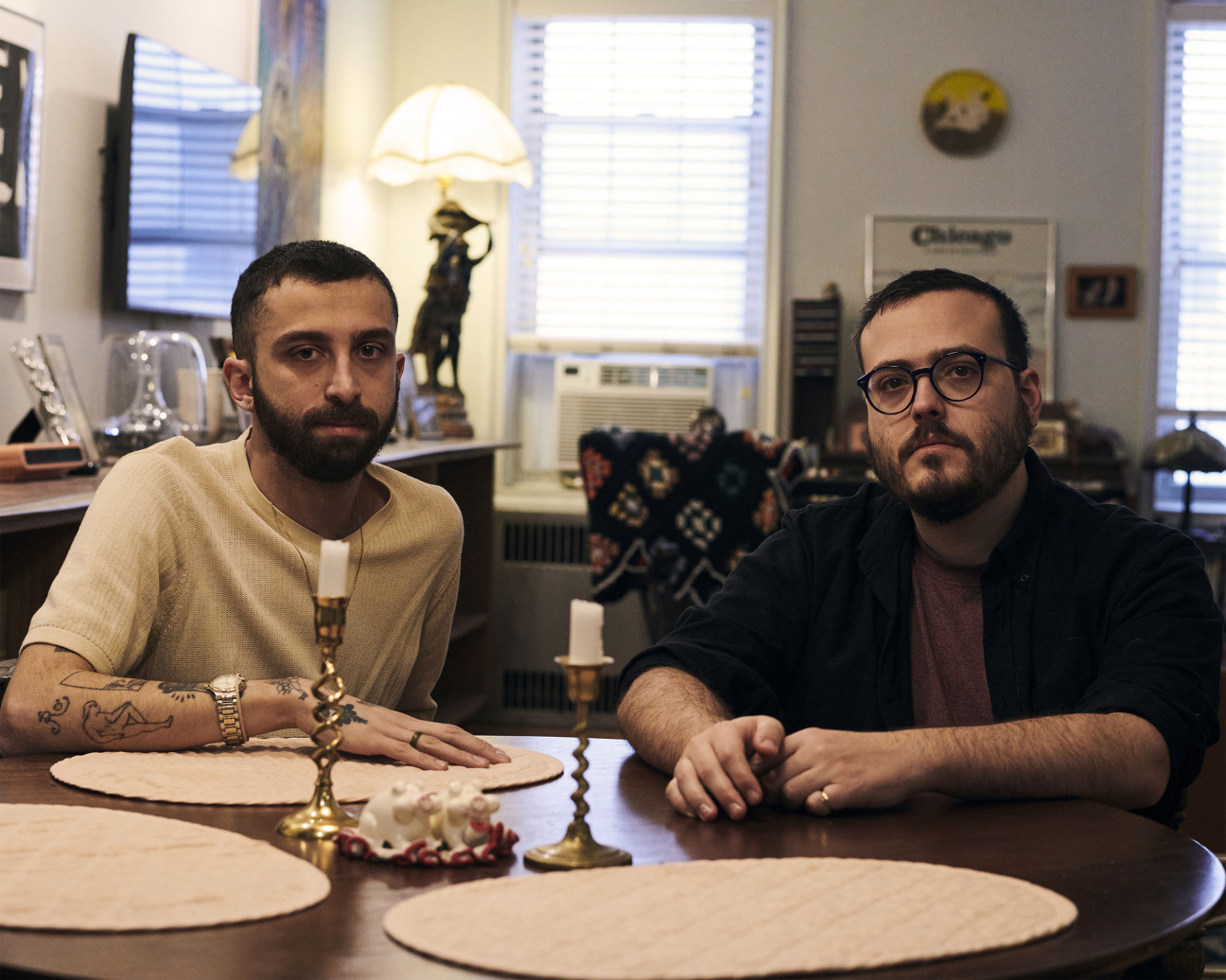

CULTURED: What do you bond over and disagree about?
Lewandowski: We only disagree on music really. We've had numerous fights about Lana Del Rey and how intentional or unintentional her affect is from year to year. It took me a while to warm up to her and Jenny Lewis. He doesn't like Ethel Cain. I abhor Bill Callahan.
Cudahy: We talk through how an artist can relay themes and ideas across an album or a novel, and how that pushes up against what’s possible in visual mediums. There are occasionally artists that either of us don’t 100 percent get. Although we try to understand and appreciate the histories of each other’s mediums, there are some artists we simply have to toss up to being “painter’s painters” or “photographer’s photographers.”
CULTURED: How has your partner affected your own practice?
Lewandowski: Watching Anthony's work evolve has revealed to me how there are choices I make that feel more akin to painting than photography in my own practice. I work on one picture, one "idea" at a time. I make tests and iterations and revisit ideas over and over. I think Anthony insists on such a persistence.
Cudahy: When I met Ian, I was already using a lot of photographic source material, mostly found images. He changed the depth of my understanding of photography as a medium and not simply a material to transform. We both make work that references previous works, gestures, and poses, so having him close all these years has helped me to develop and create language around that. The past several years, I’ve painted Ian many many times. He’s been “himself” in some of the paintings and characters or figures in others. Overall, it’s a large, hopefully decades-long project of rendering one person across time.










 in your life?
in your life?

